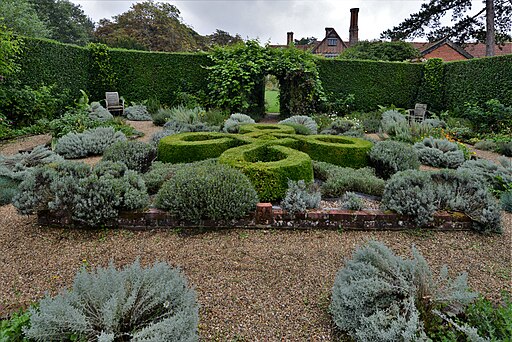Herbs in the Garden
Nothing brings taste and freshness to your meals and to your senses like fresh herbs. The scent that greets you as you walk past bushes of lavender or rub the top leaves of basil adds a further level to the joy of gardening. These plants are delicious when fresh from the garden and can be dried or frozen for future enjoyment.
Importance of Herbs
Herbs have been an important part of the garden for hundreds of years. According to historical accounts, herbs were grown in pharmacy gardens. Monks researched these herbs to learn about their uses. The study of the medical use of herbs continues to this day in non-traditional medicine.
Most of the herbs we use today in our cooking were first used medicinally. Sage, for example, is an important medicinal herb that adds a wonderful flavour to chicken and other main dishes. Make a sage tea with fresh or dried sage leaves and add local honey. I have found that this helps with the symptoms of a cold or flu.
Another herb, lavender, when added to sugar gives an interesting taste to pastry, while its sweet smell can ease stress. The parsley that is used in cooking can prevent flatulence and bad breath. The possibilities for using herbs are endless.
Growing herbs in amongst the flowers adds extra excitement to your garden. A hedge of lavender or lemon thyme brings in a variety of pollinators that will also visit your flowers and vegetables. If you are blessed with a hot area that has poor soil, an herb garden will bring you great satisfaction. Many of the woody herbs, such as sage, rosemary, thyme, and lavender, will thrive in less than perfect conditions. Herb gardens can be swaths of plants running one into another, or they can be highly structured, like Victorian knot gardens.
Making a Victorian Knot Garden
- Start with a 4-foot by 4-foot square made of lumber or lawn edging.
- Use sand to make a linear design within the square. There are many books and articles dedicated to Victorian Knot Garden design that could be helpful.
- You can add more lines through the design as you wish. These will be guidelines for the planting of different herbs.
- I like to study books on herbs for design ideas, but there are many patterns available on the internet.
- Make sure the landscape timber or edging is secure before starting to plant.
- The center of the knot is usually a small tree, perhaps a bay or a larger herb.
- You will need contrast and balance among all of the areas that you are planting in the knot.
- Grey sages provide a sharp contrast with spikes of purple lavender, and the creeping habit of thyme complements the sprawl of rosemary.
- By the end of the season, the knot should be full and ready to harvest.

Another way to enjoy fresh herbs all summer long is by growing them in a pot or planter. Containers are wonderful alternatives for those who do not have the space for a large garden. Try putting a planter beside the barbeque this summer. A large half-barrel of herbs such as basil, thyme, rosemary, sage, and parsley will add flavour to all of your summer recipes. Add a few nasturtiums as well as the peppery leaves and flowers enhance a summer salad.

I always add a French marigold to the planter as it brings in many beneficial insects and the scent tends to discourage squirrels.
If you have a sunny window, why not try a few herbs through the winter? Chives are well suited to indoors, as well as with rosemary and thyme. If you have a plant stand or an area with a grow light, you have even more opportunities to experiment with growing fresh herbs all winter long.
Winter and Drying
Many herbs are well suited for drying and are easy to store for use in the winter. If you are drying herbs, make sure they are totally dry and the container is dry. Otherwise, you risk them going moldy. I like to make pesto with my basil and freeze it in ice cube trays. Once it is frozen, I pop the cubes into a freezer bag. A cube of pesto in a soup or stew adds a glorious flavour. Fresh, dried, and frozen herbs can add flavour to your cooking and happiness to your senses.







Leave a Reply
You must be logged in to post a comment.